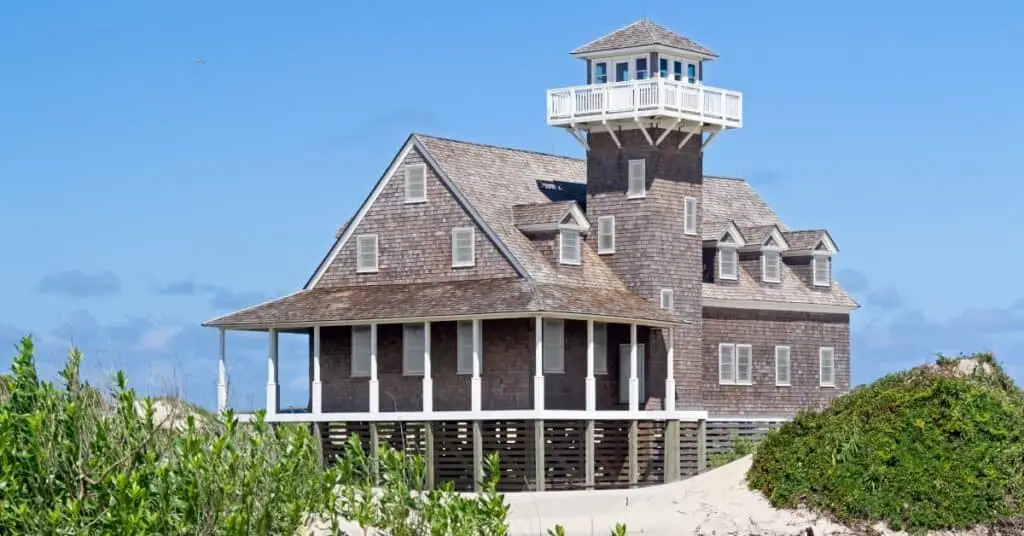Menu
Menu

Portsmouth is located on the Outer Banks of North Carolina. The village is on Portsmouth Island. It was a shipping and fishing village. Today, it holds a rich history of the time it was inhabited. There are exhibits that provide detailed information on community life in the village. The region saw its largest population in the area in 1860. There were a total of 685 people living in Portsmouth at the time. The village can only be accessed by boat or ferry. The island is connected to the village of Ocracoke by the Ocracoke inlet.
Portsmouth is in Carteret County. The North Carolina Colonial Assembly established it in 1753. In 1971, the town was abandoned. Remains of the town are part of the Cape Lookout National Seashore.
Portsmouth was a significant point of entry along the Atlantic Coast. During colonial times, the Ocracoke inlet was frequently used for shipping purposes. The town of Portsmouth was established to function as a lightering port. Cargo was transferred from ocean-going vessels to shallow-draft vessels. These were able to pass through the Pamlico and Core Sounds.
Two hurricanes hit Oregon inlet in 1846. The Hatteras inlet deepened as a result and made using the Ocracoke inlet less desirable. Portsmouth harbor was also starting to shoal up and could not be used as a port. Union soldiers then occupied the Outer Banks, forcing people to flee to the mainland. Many of those who fled did not return after the Civil War ended. The island remained prone to hurricanes which further led to its decreased population.
The United States Life-Saving Station was decommissioned in 1937 and the post office closed in 1959. The National Park Service then acquired Portsmouth Island and the village in 1967. It was made part of the Cape Lookout National Seashore.
There were two remaining elderly residents in the area. They were Nora Dixon and Marian Gray Babb. The two of them departed the island in 1971. This was after their caretaker, Henry Pigott passed away.
The village was listed on the National Register of Historic Places in 1978.
After most of the people fled during the Civil War, those who remained chose fishing over shipping. Fishing became the region’s primary occupation and source of livelihood.
The United States Life Saving Station was established in 1894. It remained functional for almost 50 years. The Life Saving Station became important to those living in the area. It provided work and additional revenue for residents.
The region continued to face multiple hurricanes that caused massive destruction. In addition to this, there was a depressed economy and an already decreasing population. In 1971, the caretaker Henry Pigott died, leading to the last two remaining residents relocating. They reluctantly left for the mainland, being the last people to live in the area.
An old-fashioned homecoming is hosted in Portsmouth village every other year and is sponsored by the Friends of Portsmouth Island and Cape Lookout National Seashore. It is held in April during even-numbered years. The next one is set to be held in April 2022.
The event is open to anyone who wishes to attend. Usually, those who attend the event are people who visit the island for the first time.
The event includes a homecoming service. It is held at the church. However, if the number of people who attend is large, the event is held on the grounds in front of the church. Activities at the homecoming service include;
· Singing
· Special music
· Recognition of guests and other visitors
· A short devotional
· Good fellowship
People are allowed to visit the village after the church service. There is a traditional dinner served afterward on the grounds.
The event’s dressing code is informal and jeans are allowed.
Gaining access to Portsmouth village can be difficult. There are no hard surface rods to drive on. This means that the village can only be accessed by water. Some of the ways to reach the island are;
1. The ferry
This is the most common means. Many people prefer to catch the passenger ferry. They get on from the village of Ocracoke.
For those going to the Homecoming event, you will need to make reservations with the ferry service.
2. Boat
There are those who know the waters between Portsmouth Village and Ocracoke. These will prefer to arrive using their private boats.
3. Vehicle
Four-wheel drive vehicles are the only ones that can manage the terrain. These people can take the privately operated vehicle ferry. This goes from the village of Atlantic. Afterward, they can drive up the beach to Portsmouth. The distance is 17 miles.
However, in 2019, Hurricane Dorian hit the area and cut up two deep inlets. This makes driving a difficult option. The inlets are between the village and the vehicle ferry landing area. They prevent vehicles from reaching the village.
You can receive seasonal guided tours of Portsmouth village.
There is the option of an audio tour to be downloaded. This allows you to walk through the village and explore on your own.
In order to maintain the purity of the region, there are some guidelines to be followed at the historic site. These include;
1. Camping can be done in the region. It is restricted to the open beach. There is no camping activity allowed in the historic district.
2. You cannot drive your vehicle in the historic district.
3. All pets must be on a leash
4. Metal detectors are prohibited
Portsmouth Village is a protected archeological and historic site. It holds a rich history in its buildings and exhibits. You will find educational and explorative material all over the site. There are numerous historic buildings in the village, the most popular include the Theodore & Annie Salter House and Visitor Center.
There are limited public facilities at the site and the buildings are not wheelchair accessible. It is however a unique place to learn about Outer Banks' history through visual and audio services.